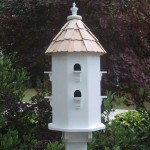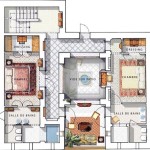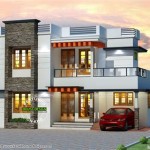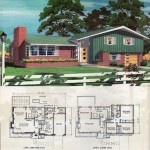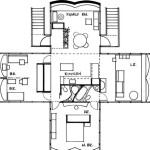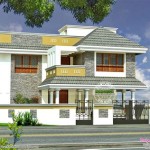Southern Living Low Country Cottage House Plans: A Guide to Timeless Charm
Southern Living Low Country cottage house plans evoke a sense of timeless charm and relaxed elegance. These designs are deeply rooted in the architectural traditions of the Southeastern United States, particularly the coastal regions of South Carolina and Georgia. The style seamlessly blends functionality with aesthetic appeal, creating homes that are both beautiful and comfortable to live in. Characterized by features that maximize natural light, ventilation, and outdoor living, Low Country cottages offer homeowners a unique and inviting atmosphere. This article will delve into the defining characteristics of these house plans, their key advantages, and essential considerations for selecting and adapting them to individual needs.
Defining Characteristics of Low Country Cottage House Plans
Low Country cottage house plans are not merely aesthetic choices; they are practical responses to the region's climate and lifestyle. The architectural elements reflect a deep understanding of the environment, emphasizing features that promote airflow, provide shade, and embrace the surrounding landscape. These features contribute to the overall comfort and livability of the home, making it a welcoming haven throughout the year.
One of the most recognizable features is the expansive front porch. This outdoor space serves as an extension of the living area, offering a shaded retreat for relaxation and socializing. Deep overhangs provide protection from the intense sun and frequent rain, while generously sized windows and doors allow for natural light to flood the interior. The porch is often integrated seamlessly into the home's design, blurring the lines between indoor and outdoor living.
Elevated foundations are another common characteristic, originally designed to protect homes from flooding in low-lying coastal areas. This elevation also improves ventilation beneath the house, helping to regulate temperature and prevent moisture buildup. The space beneath the home can be utilized for storage, parking, or even converted into a finished living area in some cases.
The use of durable and natural materials is also paramount. Wood siding, often painted in light, coastal hues, is a staple. Brick or stone accents may be incorporated for added texture and visual interest. Metal roofing, another popular choice, provides longevity and reflects sunlight, helping to keep the home cooler. The emphasis on locally sourced materials helps to integrate the home with its natural surroundings, creating a sense of harmony and authenticity.
Interior layouts often prioritize open living spaces, promoting a sense of connection and flow. Kitchens are typically designed to be both functional and inviting, with ample counter space and storage. Bedrooms are often situated to maximize privacy and offer tranquil retreats. Throughout the home, natural light is carefully considered, with windows strategically placed to capture sunlight and ventilation. High ceilings are also frequent, contributing to overall spaciousness and airflow.
Advantages of Choosing a Low Country Cottage House Plan
Selecting a Low Country cottage house plan offers numerous advantages, ranging from enhanced livability to increased property value. The design principles behind these plans are not only aesthetically pleasing, but also contribute to a more comfortable and sustainable lifestyle. The emphasis on natural light, ventilation, and outdoor living creates a home that is both functional and enjoyable.
Enhanced energy efficiency is a significant benefit. The design features of Low Country cottages are inherently energy-saving. Deep overhangs provide shade, reducing the need for air conditioning. Elevated foundations improve ventilation, while light-colored exteriors reflect sunlight. These features contribute to lower energy bills and a reduced environmental footprint. Furthermore, the use of sustainable materials, such as wood and metal roofing, further enhances the home's energy efficiency and environmental friendliness.
Improved indoor air quality is another notable advantage. The emphasis on natural ventilation helps to circulate fresh air throughout the home, reducing the buildup of pollutants and allergens. Large windows and doors allow for ample airflow, creating a healthier and more comfortable living environment. This is particularly beneficial for individuals with allergies or respiratory sensitivities.
The connection to the outdoors is a key selling point. The expansive front porch serves as an extension of the living space, providing a comfortable area for relaxation and entertainment. Landscaping is often integrated seamlessly into the design, creating a harmonious transition between the home and its natural surroundings. This connection to nature promotes a sense of well-being and enhances the overall quality of life.
Increased property value is another potential benefit. Low Country cottage house plans are highly sought after for their timeless charm and architectural appeal. The design features and high-quality materials contribute to the overall value of the home, making it a sound investment for the future. The unique character and regional authenticity of these homes set them apart from more generic architectural styles.
Essential Considerations When Selecting and Adapting Plans
While Low Country cottage house plans offer numerous advantages, careful consideration must be given to selecting and adapting them to individual needs and specific site conditions. The process involves evaluating various factors such as lot size, orientation, and local building codes. Adapting the plans to accommodate personal preferences and lifestyle is also an important aspect of achieving a successful outcome.
Site considerations are paramount. The topography of the lot, its orientation to the sun, and prevailing winds all play a role in determining the optimal placement and design of the home. A professional architect or builder can assess these factors and make recommendations for adapting the plans to maximize energy efficiency and minimize potential environmental impacts. For instance, the orientation of the porch can affect sunlight exposure and ventilation, influencing overall comfort.
Budgetary constraints must also be carefully considered. The costs associated with building a Low Country cottage can vary depending on the size of the home, the materials used, and the complexity of the design. Establishing a realistic budget early in the planning process is crucial for staying on track and avoiding unexpected expenses. Prioritizing essential features and making informed material choices can help to manage costs effectively.
The homeowner's lifestyle and personal preferences should also influence the design. The layout of the interior spaces, the selection of finishes, and the integration of personal touches are all important aspects of creating a home that reflects individual tastes and needs. Collaborating with an architect or designer can help to translate these preferences into a cohesive and functional design. Consider how the space will be used on a daily basis and adapt the plan accordingly. For example, a larger kitchen may be desired for avid cooks, or a dedicated home office for remote work.
Compliance with local building codes and regulations is essential. These codes are in place to ensure the safety and structural integrity of the home. Working with a qualified architect or builder who is familiar with local regulations can help to streamline the permitting process and avoid costly delays. Furthermore, it is important to consider any neighborhood covenants or restrictions that may impact the design or construction of the home. Ensure that the chosen plan adheres to all applicable guidelines and standards.
Adapting the plan to incorporate modern amenities is often necessary. While Low Country cottages evoke a sense of tradition, they can be seamlessly integrated with modern technologies and conveniences. Incorporating energy-efficient appliances, smart home systems, and updated plumbing and electrical systems can enhance the functionality and comfort of the home without compromising its architectural character. Furthermore, consider incorporating accessibility features to ensure that the home is adaptable to future needs.

Low Country Cottage Style Home With Southern Charm At Its Finest Living House Plans Homes

Grace Park Cottage Southern Living House Plans

Low Country Cottage Style Home With Southern Charm At Its Finest Living Tour

We Re Loving This Lowcountry Farmhouse House Plan Country Cottage Plans Southern Living
:max_bytes(150000):strip_icc()/southern-living-porch-2-ff5741f14c264190be8793ad5a461d3a.jpeg?strip=all)
These Southern Living House Plans Have Dreamy Porches

Low Country Cottage Style Home With Southern Charm At Its Finest Living Tour

The Loudon
30 Small House Plans That Are Just The Right Size

Low Country Architecture Beach House Plans From Home Designs


